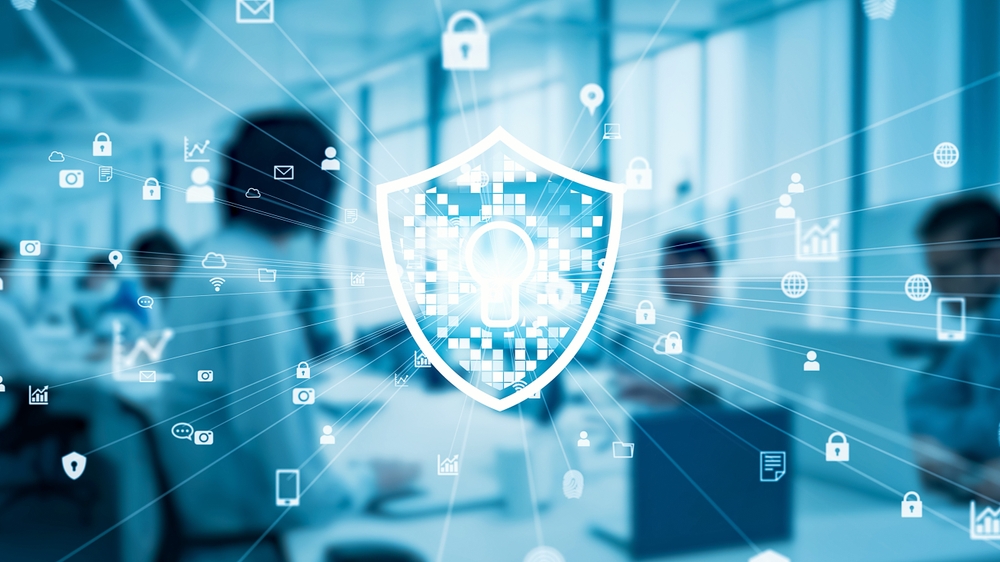Technology Glossary
Keeping up with technology is important no matter what industry you are in. In addition to facilitating effective career growth, it improves overall communication in the workplace and online. Adapting and adjusting your business to the changing trends in technology is critical to making decisions that affect the future of your organization.
We’ve compiled a glossary of technical terminology for 2022 as a reference to concepts, processes, and solutions in the information technology sector.
A
Access control – How the ability to see and modify files is allowed or disallowed, which may or may not include physical access control to restricted areas.
Access point – A device that allows wireless equipment to connect to a wired network.
API – Stands for Application Programming Interface (API). It’s an interface that governs interactions between software intermediaries, defining which calls and requests are allowed, and so on.
APT – Stands for Advanced Persistent Threat (APT), an incredibly sophisticated cybersecurity threat actor, which may or may not be a nation-state or a state-sponsored group, the most dangerous hackers on the planet.
ActiveX – A Microsoft technology linking desktop applications to the Web.
Anonymous FTP – An open, anonymous server where users can easily download files sans username or password, the least secure way to transfer files.
B
Bandwidth – A metric quantifying the amount of data being transmitted over a network at any given point. Higher bandwidth means that a greater volume of data can be transmitted while a low bandwidth can significantly inhibit performance.
Biometrics – A way to authenticate access based upon one or more physical traits like fingerprints or facial contours.
BCP – A business continuity plan is a document that explains the procedures necessary to keep an organization functioning after a significant disruption (i.e., responding to a cyberattack).
BYOD – Stands for “bring your own device” (BYOD), a policy that lets employees use their personal mobile devices to access email, company data, critical files, and more.
BI – Stands for business intelligence (BI), a term that comprises analytics of business operations.
Bluetooth – A common wireless network standard that utilizes radio waves to transmit data.
Buffer – A certain amount of RAM designated as a temporary holding area so that the system can process data before transferring the data to another device or system.
C
Cache – Files saved on a hard disk or web server that help browsers display content more quickly.
Category-1 data – Information protected by law or a legally binding contract like a service agreement.
Category-2 data – Information designated for universities only but accessible to others in only certain instances.
Category-3 data – Information available to the general public.
CGI – Stands for a common gateway interface (CGI), a way for web servers to process data received from a client browser that denotes what the server will do next with the data.
Change management – A defined process for making modifications to hardware, software, firmware, and documentation, ensuring that systems remain protected before, during, and after new system implementations.
Cloud – A colloquial term for cloud computing services, which essentially refers to the software and services accessible through the Web.
Content management system – A software that allows for the creation, editing, publishing, and deleting of content on a web page.
Cookie – A text file a web browser uses to identify a user’s session.
CSS – Stands for Cascading Style Sheets (CSS), a coding language that defines how web pages display dynamic elements.
Cross-Platform – A system that is interoperable between many operating systems and platforms.
Cybersecurity – The practice of securing data, networks, and access control using various tools and methods to thwart unauthorized access.
D
DLP – Stands for data loss prevention (DLP), the tools and processes used to ensure that sensitive data is secure, detect potential cyberattacks, and thwart their effects.
Digital certificate – A document that contains a digital signature, bound to numerical information with a unique identifier.
DRP – Stands for a disaster recovery plan (DRP), a document that outlines the processes for recovering and responding to major system failures or cyberattacks.
DMZ – Stands for a demilitarized zone (DMZ), a specific type of network that contains external-facing services to the Internet.
DNS – Stands for domain name system (DNS), a naming convention for computers and other resources connected to the Web with an IP address.
Daemon – A special application that performs one specific task, which may or may not be running at all times.
DHCP – Stands for dynamic host configuration protocol (DHCP), a network protocol that lets local servers temporarily assign IP addresses.
Domain – Generally, a network hierarchy includes domains and subdomains with major categories at the top (i.e., .com or .edu domains) down to the computer’s actual name in the lowest hierarchy.
E
EAP – Stands for extensible authentication protocol (EAP), a protocol that supports multi-authentification methods.
Edge computing – A distributed computing paradigm that moves processing and data storage closer to where it is needed, improving response times, and saving bandwidth.
Encryption – The manipulation of data to safeguard its confidentiality.
Endpoint security – A way to secure end-user devices (i.e., desktops, laptops, and mobile devices) from exploitation and cyberattack.
End user – Someone given the authorization to access data on a system.
Exploit Kit – A software toolkit preferred by cybercriminals to attack known, specific vulnerabilities in popular systems, which precludes the need to apply multiple malware in a single attack. The kit contains everything hackers need to exploit that particular software or system (i.e., a Flash exploit kit versus a Js exploit kit).
F
FTP – Stands for file transfer protocol (FTP), a way of passing files between host computers via the Web.
Firewall – A software or a hardware device designed to block certain types of web traffic and IP addresses.
FireWire – A “plug and play” interface based on the IEEE1394 High-Performance Serial Bus standard, which preceded the development of USB.
Flash memory – A type of memory that retains information even after the device is disconnected from a power source.
G
Gateway – Hardware that routes traffic between networks and assigns IP addresses to wireless devices in a business or home network environment.
Greyware – A malicious software program that falls into the “gray area” between legitimate software and malware. (i.e., adware and trackware).
H
Hostname – A readable label that denotes a device connected to a network.
Hyperconverged infrastructure – A software-defined infrastructure that utilizes virtualization of all of the elements of conventional hardware-defined systems.
HTTP – stands for hypertext transfer protocol (HTTP), the standard web protocol the vast majority of consumer websites use.
Host – A computer accessed by a remote user, usually referring to a specific network’s authorized devices.
Hypervisor – A hardware virtualization technique that allows multiple operating systems to run concurrently on a host computer. The solution presents to the guest operating systems a virtual operating system to manage the execution of the guest operating systems.
I
IDS – Stands for an intrusion detection system (IDS), a software application that monitors network traffic and hosts entry logs for indicators of known and likely unauthorized access. When the system pinpoints suspicious activities, it will notify the network administrator.
IP address – Stands for Internet Protocol address, a unique numerical identifier that every computer connected to the Internet must have to receive information.
IV&V – Stands for independent verification and validation (IV&V), a process that encompasses whether or not an implementation project was successful via the analysis of a third party.
IaaS – Stands for Infrastructure as a Service (IaaS), a cloud-based service that outsources infrastructure in its entirety.
J
Java – A basic programming language used in web pages that often feature dynamic content and other animated elements.
JavaScript – A scripting language that shares many of Java’s capabilities, uses, and features.
K
Keyword – Most often refers to an index entry, which correlates to a specific record, document, or webpage in a search engine context.
M
Malware – Software designed with malicious intent to infiltrate, disrupt, damage, or cripple a computer system without the owner’s informed consent. They include types of software like ransomware spyware, Trojan horses, viruses, and worms.
MAC address – Stands for media access control (MAC). Every network interface has a media access control address, its physical address.
Mobile device management – A software used to distribute applications, data, and configuration settings to mobile communications devices.
Managed service provider – A business model for providing information-technology services.
N
Nameserver – A computer that runs a program for converting domain names into the corresponding IP addresses.
Network – A group of interconnected computers capable of exchanging information, which can be as few as several personal computers on a LAN or as large as the Internet, a worldwide network of computers.
O
Offsite storage – A data security practice where data is located in a geographically different location that does not share the same threat.
P
Patch – A fix or update for a software program, which may or may not relate to a security issue.
PaaS – Stands for Platform as a Service (PaaS), a complete cloud-based development and deployment environment that enables the delivery of systems.
R
RAM – Stands for Random Access Memory, a memory space for your computer to read and write data.
Ransomware – A type of malicious software designed to deny access to a computer system or data until a ransom is paid.
RPO – Stands for Recovery Point Objective (RPO), a set period of time in which business operations need restoration after a cyberattack, natural disaster, or some other type of system failure.
RTO – Stands for Recovery Time Objective (RTO), a representation of the amount of time a system can be down without significantly altering business operations, which may also refer to the time that it takes for the system to normalize.
Root access – The greatest privileged access to a system that allows users to change or delete any configurations, software, and data.
S
SOC – Stands for Security Operations Center (SOC), a centralized unit or building that deals with security issues on an organizational and technical level, usually located within a building or facility and is a central location from where staff supervises the technology.
SAN – Stands for Storage Area Network (SAN), a storage network dedicated to providing access to consolidated or block-level storage, primarily used to make disk arrays and tape libraries accessible to servers so that they behave as if locally attached to the operating system.
SLA – Stands for Service Level Agreement (SLA), a contract that establishes a set of deliverables from one party to the other, usually the service provider providing services to a client. All of the details of the business arrangement are specified in the contract, including success metrics and penalties should the agreement be breached by one party or both.
SaaS – Stands for Software as a Service (SaaS), a licensing and software delivery model which is centrally hosted and most often based on subscription pricing models with multiple tiers of service.
Spear Phishing – A highly targeted phishing attempt that aims to steal high-value credentials for unauthorized root access throughout a network, the worst kind of phishing attack because the threat actors have a specific intent (i.e., a fake email targeting a company’s CMO).
Single sign-on – An access control system that allows end users to sign in only once to maintain access to multiple information systems without needing to enter a new username and password for each system.
SSL – Stands for Secure Sockets Layer (SSL), a cryptographic key that acts as a “padlock” for data connections over the Web. Web traffic not protected by SSL can be intercepted by malicious actors more readily.
System hardening – The process of increasing security by reducing a system’s vulnerabilities and addressing any potential avenues for unauthorized access (i.e., removing unnecessary usernames and passwords from former employees)
T
Trojan – Also known as a Remote Access Tool (RAT), a highly insidious malware that mimics a legitimate program until the code is executed, which then activates the malware unbeknownst to the user. The worst trojans can be used as a platform to implant other malware in a multi-stage attack.
Two-factor authentication (2FA) – A means to add an extra layer of security to access an application or system, usually with a PIN or some other type of unique identifier in addition to the user’s credentials. This method is more secure than a single-password system.
U
USB – Stands for the universal system bus, an interface between computers and external devices that allows for quick attaching and detaching (i.e, a flash memory drive).
URL – Stands for universal resource locator, another name for a website as displayed by the user-readable text in a web browser’s address bar.
V
VPN – Stands for Virtual Private Network (VPN), a private network mainly used for increasing security over a public internet connection. An organization will use a VPN for remote access, but many other similar services are available to residential users.
W
Web – also known as the World Wide Web, is an ecosystem of internet hosts that we access through web browsers to find multimedia and content in all of its various formats.
Z
Zero-day exploits – A new cybersecurity vulnerability in a system that organizations have “zero days” to prepare for a solution. Sharing zero-day exploits is how APT actors ply their trade undetected until the exploit becomes public knowledge.
Questions about the best technology solutions for your business?
Contact BridgeheadIT for a complete technology assessment.
We conduct holistic technology assessments to build a plan of action and bring your technology infrastructure to its maximum potential without compromising security.
Schedule a confidential meeting to discuss your business needs.
(210) 477-7900
STAY CURRENT WITH TECH TRENDS
With technology rapidly advancing it is important to understand current technology jargon.




